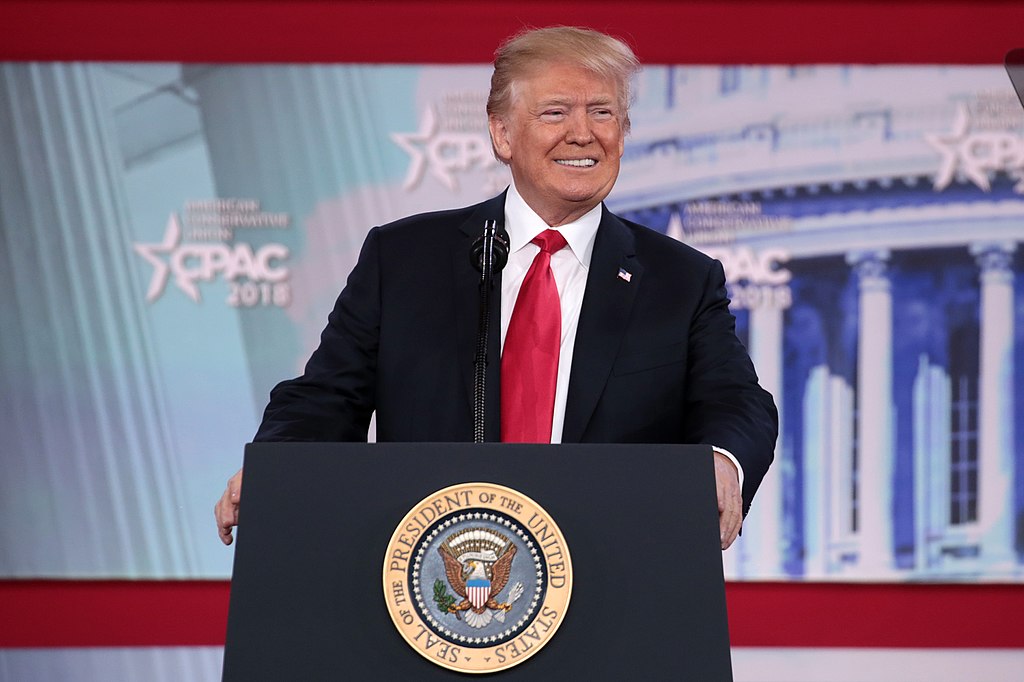In 2025, President Donald Trump is doubling down on his commitment to revitalizing American manufacturing, aiming to bring jobs back to the U.S. and reduce reliance on foreign goods. Central to his plan is an aggressive "Made in America" initiative that includes tax incentives, tariffs, and deregulation designed to bolster domestic industries.
During his campaign, Trump promised sweeping reforms to reignite the manufacturing sector. Now, as his policies begin to take shape, they have ignited fierce debates among economists, industry leaders, and workers. Trump’s team argues that his approach will create millions of jobs and strengthen the economy, while critics warn of potential inflation, strained international relations, and rising consumer costs.
Proposed Policies: Incentives and Tariffs
The cornerstone of Trump’s manufacturing plan includes significant tax breaks for companies that establish or expand production facilities within the U.S. In a move aimed at reducing outsourcing, the administration is also proposing increased tariffs on imported goods, particularly from countries like China and Mexico.
According to White House officials, these measures are designed to encourage companies to shift operations back to American soil, boosting local employment. The administration is also exploring government contracts that prioritize businesses with U.S.-based supply chains.
However, detractors argue that these policies could backfire. Economists point out that tariffs often lead to higher costs for businesses and consumers. A 2023 report from the Peterson Institute for International Economics found that Trump’s earlier tariffs contributed to increased prices on everything from electronics to household goods. Critics fear a similar outcome in 2025.
Critics Question Feasibility as Supporters Applaud Bold Moves
While Trump’s vision has garnered significant support from blue-collar workers and industry groups, skeptics have raised concerns about its long-term viability. Many argue that the global economy has become too interconnected for the U.S. to rely solely on domestic production.
Shannon Peters, a senior economist at the Brookings Institution, stated, “These policies might temporarily boost certain industries, but they ignore the complexities of global supply chains and the reality of international trade.”
On social media, the plan has sparked mixed reactions:
- @MadeInUSA2025: “Trump is putting Americans first! It’s time we stopped depending on other countries. #ManufacturingRevival”
- @EconWatchdog: “Tariffs = higher prices for consumers. Manufacturing doesn’t just magically return overnight. This is a short-sighted strategy.”
- @BlueCollarVoice: “Finally, a president who cares about American jobs. My factory might reopen thanks to this plan. #Trump2025”
- @GlobalEconExpert: “We live in a global economy. Isolationist policies like this hurt more than they help. #EconomicReality”
- @MomAndPopShop: “Small businesses will struggle to keep up with rising costs if tariffs are implemented. We need balanced policies.”
- @WorkersUniteUSA: “Americans want good jobs, not empty promises. Let’s see if these plans actually deliver. #Skeptic”
Economic Implications and Future Prospects
Trump’s manufacturing strategy has the potential to reshape the U.S. economy, but the road ahead remains uncertain. While the administration touts job creation and economic independence, experts warn that over-reliance on protectionist policies could harm the economy.
As Trump’s initiatives roll out, industry leaders and policymakers will closely monitor their impact on inflation, trade relations, and consumer spending. The success of these measures may ultimately depend on how well they balance domestic priorities with global realities.



 Trump Announces $1,776 Cash Bonus for U.S. Military Personnel Ahead of Christmas
Trump Announces $1,776 Cash Bonus for U.S. Military Personnel Ahead of Christmas  Italy Supreme Court Upholds Salvini Acquittal in Migrant Kidnapping Case
Italy Supreme Court Upholds Salvini Acquittal in Migrant Kidnapping Case  U.S. House Advances GOP Healthcare Bill as ACA Subsidies Near Expiration
U.S. House Advances GOP Healthcare Bill as ACA Subsidies Near Expiration  Trump Attends Dover Ceremony Honoring U.S. Personnel Killed in Syria
Trump Attends Dover Ceremony Honoring U.S. Personnel Killed in Syria  U.S. Initiates $11.1 Billion Arms Sale to Taiwan Amid Rising China Tensions
U.S. Initiates $11.1 Billion Arms Sale to Taiwan Amid Rising China Tensions  U.S. Senators Move Toward Deal to Strengthen Military Helicopter Safety Rules
U.S. Senators Move Toward Deal to Strengthen Military Helicopter Safety Rules  Fernando Haddad Confirms He Will Not Run for Office in 2025, Signals Possible Exit as Brazil’s Finance Minister
Fernando Haddad Confirms He Will Not Run for Office in 2025, Signals Possible Exit as Brazil’s Finance Minister  U.S.-Russia Talks in Miami Raise Hopes for Potential Ukraine War Deal
U.S.-Russia Talks in Miami Raise Hopes for Potential Ukraine War Deal  Syria, Kurds and U.S. Race to Show Progress on SDF Integration Deal
Syria, Kurds and U.S. Race to Show Progress on SDF Integration Deal  Kennedy Center Reportedly Renamed Trump-Kennedy Center After Board Vote
Kennedy Center Reportedly Renamed Trump-Kennedy Center After Board Vote  Canada Signals Delay in US Tariff Deal as Talks Shift to USMCA Review
Canada Signals Delay in US Tariff Deal as Talks Shift to USMCA Review  Honduras Election Recount Delayed Amid Protests and Political Tensions
Honduras Election Recount Delayed Amid Protests and Political Tensions  Trump Signals Progress in Ukraine Peace Talks Ahead of U.S.–Russia Meeting
Trump Signals Progress in Ukraine Peace Talks Ahead of U.S.–Russia Meeting  Putin Signals Possible Peace or Continued War in Ukraine at Major Year-End Address
Putin Signals Possible Peace or Continued War in Ukraine at Major Year-End Address  Trump Administration Plans Major Increase in Denaturalization Cases for Naturalized U.S. Citizens
Trump Administration Plans Major Increase in Denaturalization Cases for Naturalized U.S. Citizens  Argentina Unions Rally Against Milei’s Labor Reform as Congress Debates Key Bill
Argentina Unions Rally Against Milei’s Labor Reform as Congress Debates Key Bill 
































